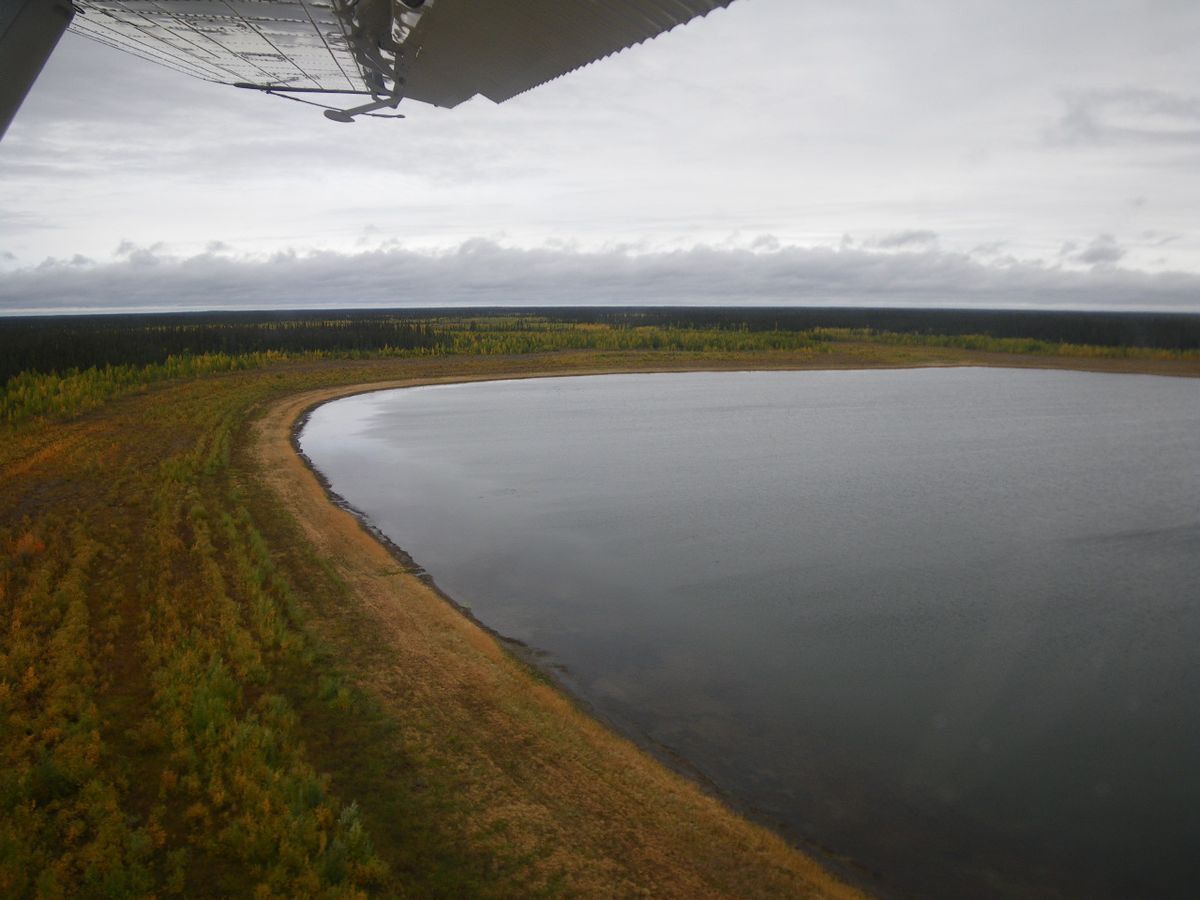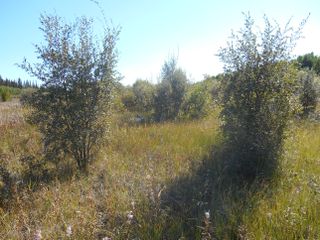Despite Warming, Ground Refreezes at Alaska's Shrinking Lakes

Alaska's bushy willows can temporarily counteract some of the effects of climate change in one of the world's most quickly warming places, researchers have discovered.
Bushwhacking through dense willow thickets, with branches that tear flesh and conceal marauding bears and moose, is a rite of passage for cross-country trekkers in Alaska. At Alaska's shrinking Twelvemile Lake, the heavy shade provided by willows growing on the lake's newly exposed margins chills the ground enough for new permafrost to form, researchers have discovered. However, modeling of the conditions that encourage new permafrost growth suggests the icy ground will only last another 70 years because of global warming, according to the study, published Feb. 14 in the journal Geophysical Research Letters.
Twelvemile Lake is one of millions of lakes that pepper Alaska's permafrost. (Permafrost is soil with ice that stays frozen for more than two years.) Some of these lakes are shrinking, while others are expanding, according to analyses of satellite images and aerial photos snapped since the 1950s. Earlier studies suggest that melting permafrost plays a role in the shifting lake sizes. For example, lakes may drain away when the shallow permafrost below them thaws, like opening the drain in a tub. But where permafrost is thicker and melts more slowly, lakes may grow as the melting ice adds to their extent.
"These lakes are the bellwether of climate change," said Martin Briggs, lead study author and a research hydrologist with the U.S. Geological Survey.
Some studies have found that the biggest shifts in lake size are occurring in central Alaska, home to Twelvemile Lake, so-named because it is 12 miles (19 kilometers) from the town of Fort Yukon. USGS scientists have been studying shrinking Twelvemile Lake and other Yukon Flats lakes to better understand what is driving the changes.
Twelvemile Lake isn't the only disappearing Arctic lake where scientists have seen new permafrost appear, but the phenomenon is more common farther north, where almost all the ground is frozen solid. In central Alaska, where the permafrost is patchy and discontinuous, the reasons for new ice were less clear.
Under a shady tree
Sign up for the Live Science daily newsletter now
Get the world’s most fascinating discoveries delivered straight to your inbox.
From previous surveys at the lake, the researchers knew all the permafrost there was new, Briggs said. They also had tracked the vegetation growth — first open meadow, and then clumps of willow, colonized the receding lake bed during the past 20 years. Recently, patches of permafrost appeared under the shrubby willows. [In Images: Get a Rare Glimpse of Remote Alaska]
Field work and modeling confirmed that the willow shrubs cooled the soil in summer, enough for the ground to freeze year-round. The plants also help keep the ground frozen by sucking up soil moisture that might have thawed the ice.

The findings also mean there's another way permafrost could control lake levels. As new permafrost forms, the frozen ice may block groundwater drainage, slowing down the lake shrinkage, the researchers think.
"That's the main reason we care about this," Briggs said. "As more and more willows start to grow, there might be a feedback effect that allows the lake to refill."
Simulations indicate that under the scenarios from current climate models, new permafrost at Twelvemile Lake could reach a maximum of 20 feet (6 meters) below the surface near the lake. About 5.4 degrees Fahrenheit (3 degrees Celsius) of warming is predicted in central Alaska during the next 100 years. However, the permafrost is expected to peak after 45 years, and then start to melt again as temperatures rise, the study predicts.
"This natural cycle of draining, new permafrost forming and the lake refilling might be potentially overridden by climate change because we're in such a sensitive system here," Briggs said.
The USGS teams will return to Twelvemile Lake this summer and test their findings in more detail, he said.
Finding the cause
USGS researchers are also examining whether central Alaska lakes are lowering due to natural climatic changes, such as decreased precipitation, or because of man-made warming. Yukon Flats offers a good testing ground because some lakes have a permafrost link, while others are controlled only by groundwater drainage, said USGS research geologist Lesleigh Anderson.
Chemical signatures in some lakes indicate they are shrinking simply because the region is receiving less rainfall than 30 years ago, according to a study led by Anderson, published July 24, 2013, in Geophysical Research Letters. "We were really surprised by the extent of evaporation," Anderson told Live Science. "It's similar to what you would see in Saudi Arabia."
Sediment cores taken from interior Alaska lakes also suggest central Alaska regularly goes through wetter and drier periods, such as those driven by the Pacific Decadal Oscillation, a climate cycle that flips sea-surface temperatures in the north Pacific every 20 to 30 years. "The good news is that the recent decrease in lakes might reverse," Anderson said.
Email Becky Oskin or follow her @beckyoskin. Follow us @livescience, Facebook & Google+. Original article on Live Science.













